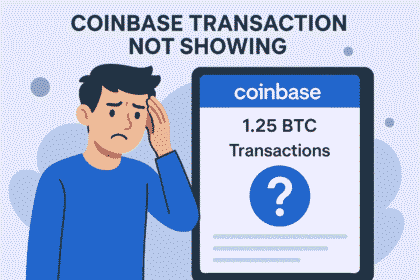When purchasing a home, you likely plan to schedule several inspections—roof, plumbing, electrical—but one often-overlooked yet critical step is the sewer scope inspection. While it may not seem urgent, this simple procedure could save you thousands of dollars in unexpected repairs and major headaches down the road.
In this blog, we’ll break down what a sewer scope inspection is, why it matters, how the process works, and when it’s a smart move to schedule one.
What Is a Sewer Scope Inspection?
A sewer scope inspection is a specialized evaluation of your property’s main sewer line—the underground pipe that connects your home’s plumbing system to the municipal sewer system or a private septic tank. Using a high-resolution, waterproof camera attached to a flexible cable, a trained technician feeds the scope through an accessible point in your sewer line to visually examine its condition.
This inspection gives you real-time footage of what’s happening below ground, identifying any current or potential problems within the sewer line that a regular home inspection may not detect.
What Does a Sewer Scope Inspection Detect?
The camera used during a sewer scope inspection travels through the entire line, capturing clear video of the pipe’s interior. Here’s what it helps uncover:
-
Tree Root Intrusion: Roots can infiltrate sewer pipes, causing blockages and pipe damage.
-
Cracks and Breaks: Older or poorly maintained pipes can crack or collapse due to age or soil shifting.
-
Blockages or Buildup: Accumulation of grease, debris, or foreign materials may be clogging the flow.
-
Bellied or Sagging Pipes: A section of pipe may have sunk due to soil movement, leading to pooling and backup.
-
Corrosion or Deterioration: Especially in cast iron or clay pipes common in older homes.
-
Foreign Objects: Non-flushable items accidentally entering the system.
By detecting these issues early, homeowners can avoid extensive repairs, sewer backups, and unexpected emergencies.
Why Sewer Line Inspections Are Crucial
You may be asking: Is a sewer scope inspection really necessary? The answer is a strong yes—especially in these scenarios:
1. Before Buying a Home
Sewer problems are expensive and often not covered by standard homeowner’s insurance. If you’re investing in a property, a sewer inspection provides valuable insight into the condition of the underground infrastructure—something a general home inspector doesn’t assess. If issues are found, you can negotiate repairs or price adjustments before closing.
2. Buying an Older Home
Homes built before the 1970s commonly use clay or cast iron sewer lines that degrade over time. These materials are prone to breaking down, corroding, or being infiltrated by roots. An inspection helps determine whether repairs or replacements are needed.
3. Presence of Large Trees on the Property
Trees can be charming, but their roots can spell disaster for sewer lines. If your potential or current home has mature trees near the sewer path, a sewer scope inspection can catch root intrusion before it becomes a costly issue.
4. Ongoing Plumbing Issues
Recurring clogs, slow drains, or foul odors can signal deeper sewer line problems. Instead of guessing, a sewer scope inspection identifies the root cause (literally or figuratively) so it can be resolved efficiently.
How Long Does the Inspection Take?
Most sewer scope inspections take between 30 minutes to one hour. After the technician completes the process, you’ll receive a clear report and, in many cases, video documentation of the findings. This report outlines any problem areas and recommends necessary repairs or further evaluation.
What If Problems Are Discovered?
If the inspection reveals damage or blockages, don’t panic. The purpose of the inspection is to catch issues early—before they escalate. Depending on the situation, potential solutions may include:
-
Clearing the blockage (e.g., via snaking or hydro jetting)
-
Repairing cracked or broken sections
-
Replacing the full sewer line (in extreme cases)
If you’re still in the buying phase, this knowledge can give you leverage in price negotiations or request the seller to handle repairs before closing.
Can I Skip a Sewer Scope Inspection?
Technically, yes—but skipping it is risky. Sewer line repairs can cost thousands of dollars, and problems may not reveal themselves until it’s too late. Investing in a sewer scope inspection is a small upfront cost that could save you from major future expenses.
Think of it as your “underground insurance” when buying a home. You wouldn’t buy a car without looking under the hood—so why buy a house without knowing what’s beneath it?
Choosing a Reliable Inspection Company
Not all inspection companies offer the same level of service. When scheduling a sewer scope inspection, look for licensed, experienced professionals who use modern equipment and provide detailed, easy-to-understand reports.
At ProTec Inspection Services, we pride ourselves on offering thorough, accurate, and professional sewer inspections. Our team is trained to identify subtle issues that may otherwise go unnoticed and provide clear guidance on the next steps.
Final Thoughts: Peace of Mind Starts Below Ground
A sewer scope inspection is one of the smartest choices a homeowner or homebuyer can make. It provides clarity about the condition of one of the most important (and hidden) systems in your home. Whether everything looks perfect or repairs are needed, you’ll be better prepared to make confident decisions.
Don’t leave your investment to chance. Schedule a sewer scope inspection with ProTec Inspection Services today and ensure your home is protected—inside and out.




